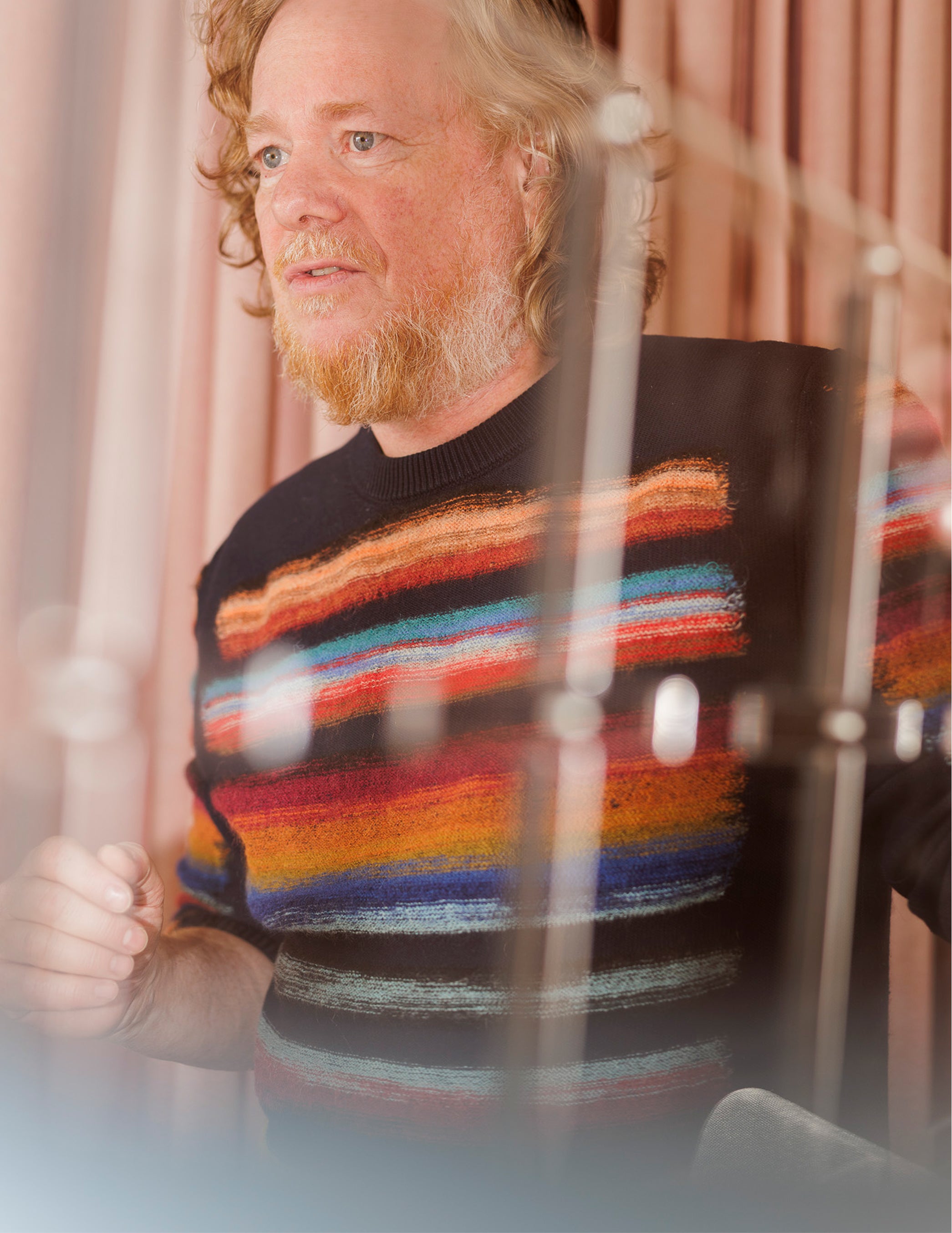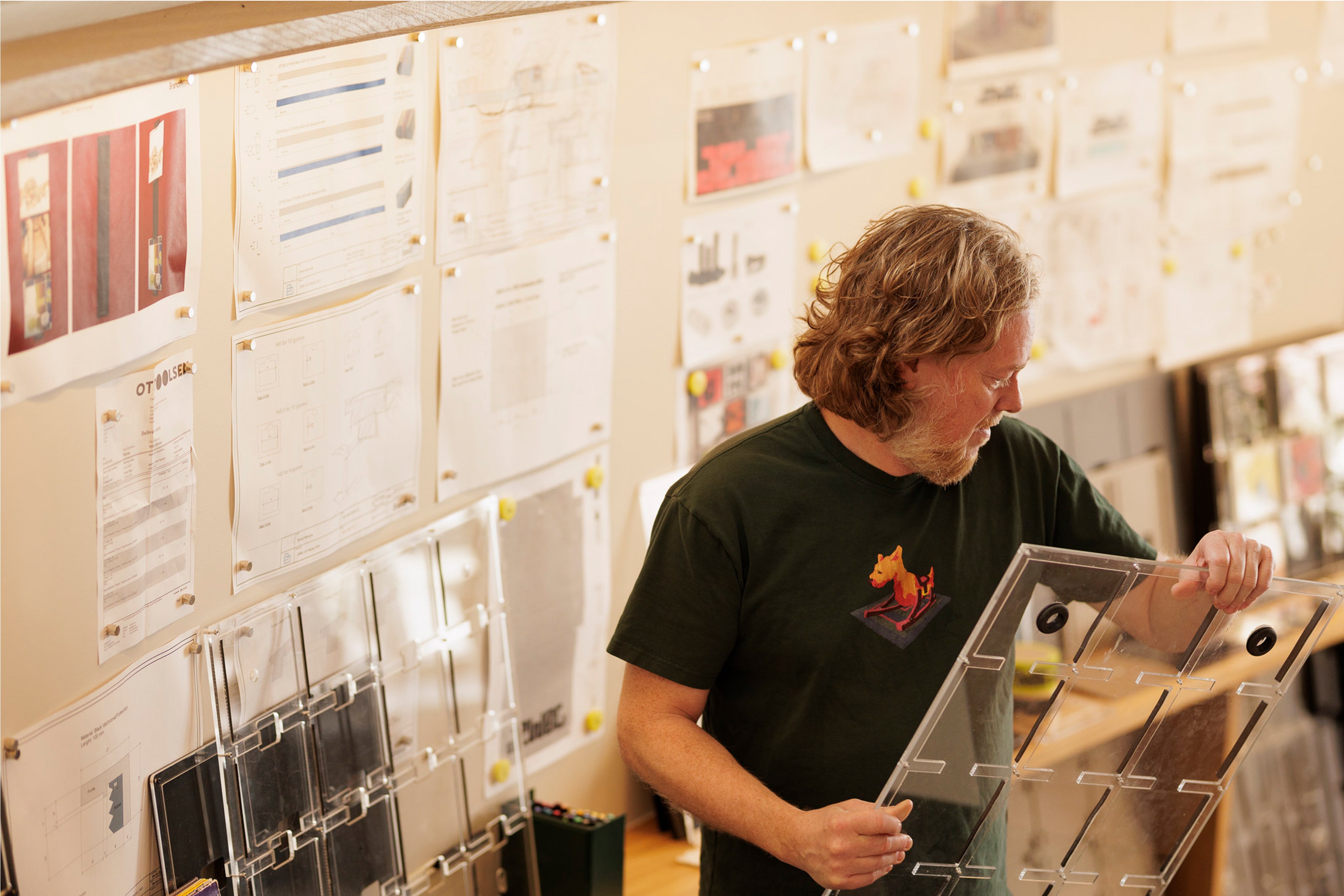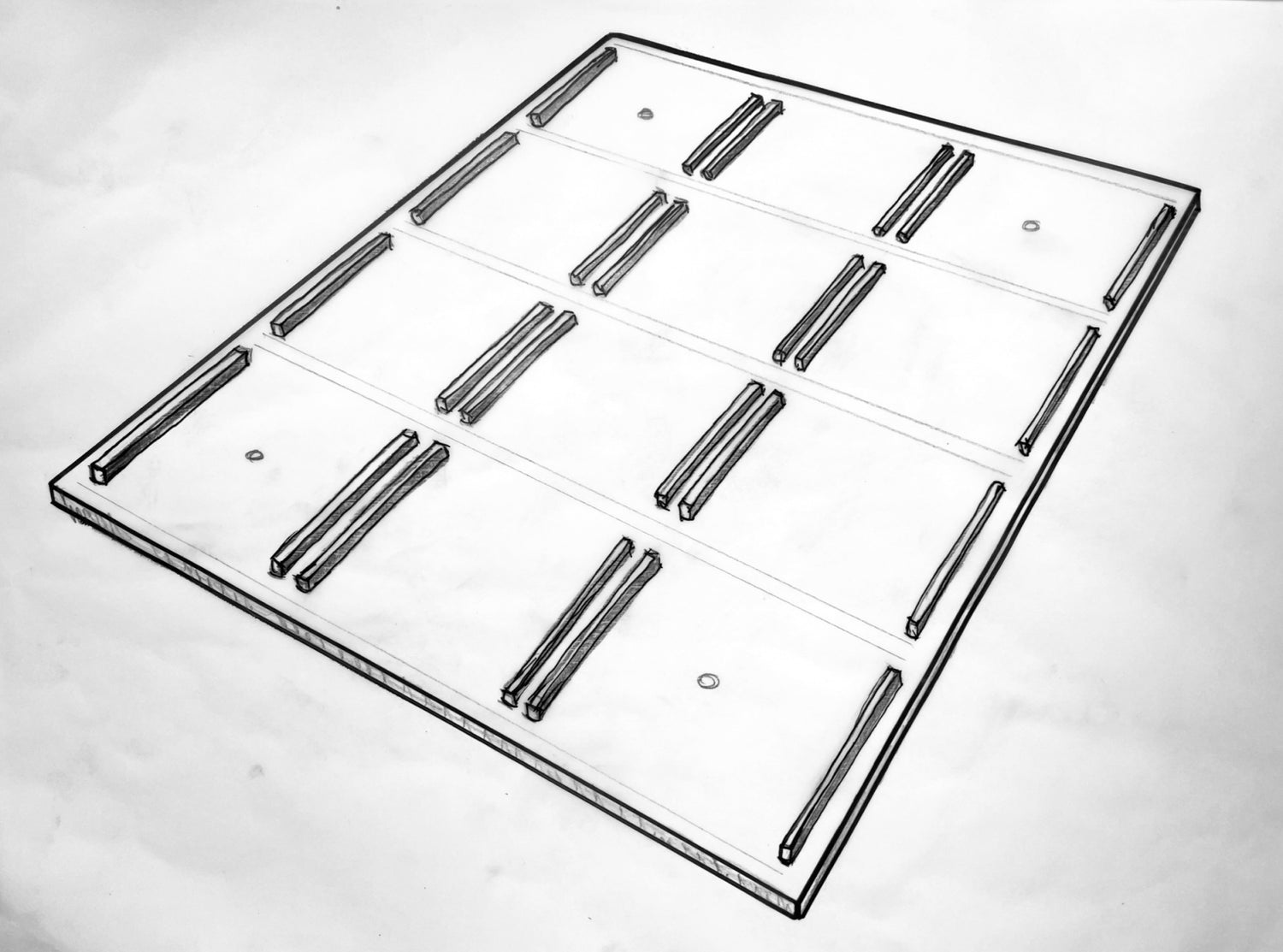Twenty five years in the making
In the late 90’s Marius Brandl was a Norwegian studying interior- and product design at the Danish School of Design in Copenhagen. It was just like any other evening – loud music playing at a party, people chatting and dancing, drinks and a pile of CDs scattered across the table.

«I remember the moment vividly, looking at the covers on the table and thinking, ‘Why isn’t there a way to showcase CD-covers as they were meant to be experienced – by listening and engaging with them at the same time?’. A simple thought, but that one really stayed with me»
MARIUS BRANDL

AN IDEA THAT STUCK
During his studies, Marius made prototypes of what he imagined the CD display could look like. Years passed and life moved in different directions, but the idea didn’t go away, and the prototype display hung on the wall at Brandl’s various places for years.
One autumn night in 2023 Marius sat on the sofa with his best friend Kjetil G. Larsen. Music in the background, a bottle of wine open and talking about life. With support from Kjetil – an invaluable partner, both financially and creatively – they began developing what would become Jewel.
– I was on sick leave, stuck on the sofa, sketching hundreds of drawings to sort out the design. Eventually, everything clicked, and I knew exactly how the construction needed to be, Brandl explains.

TRUSTING THE PROCESS AND OWNING THE QUALITY
Brandl gathered a small super-team of close, likeminded people – Sebastian Hungerer (Teknisk Museum) and Julius Winger as a valuable sparring partners on design, as well as Cato Borgersen (on production) and Gabriel Westby with his mad 3D-rendering skills
Throughout the process, he was obsessed with finding the best solutions. Choosing the right materials like acrylic, aluminum, and custom-made natural rubber became crucial. Every minor adjustment affects the next, like a domino effect, and everything needed to align to be just right. They experimented, failed, and learned what kind of things worked – and why others didn't.
– At first, we tried to make it as cheap and accessible as possible, but it just didn’t feel right. We quickly realized that this was about owning the quality. Jewel is not meant to be a shortcut. The rubber gives the perfect tension and grip, and it’s fully replaceable. On a personal note, my grandmother worked in a rubber factory in Hallingdal, and I still remember the samples they used to bring home. This felt like a full circle moment. It felt like home, Brandl shares.
CREATED BY MUSIC LOVERS, FOR THE LOVE OF MUSIC
Through it all, Brandl was driven by one thing: the Jewel CD display needs to exist. It’s about more than beautiful design – it’s about music, identity, and life itself.
– CD’s were revolutionary when they first came out over 40 years ago. Now they’re on the verge of a revival, and Jewel is our way of honoring their legacy. I’ve always had a deep love for CDs, and I know I’m not alone. Being able to display them like the artworks they are, is a way to show who you are without saying a word. It’s a physical expression in an increasingly digital world, Brandl says.
Jewel is for those who care about music, design, and craftsmanship. For collectors, nostalgics, and new believers who miss the feeling of owning something real. It’s for those who want to see, feel, and hear – and let the memories live on. Our vision is simple: to give CDs the honor they deserve, and to do it with pride, purpose, and passion.






